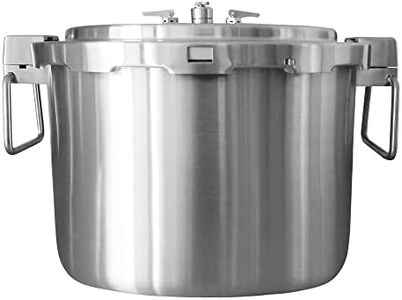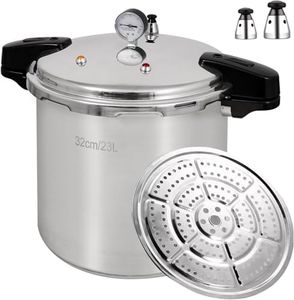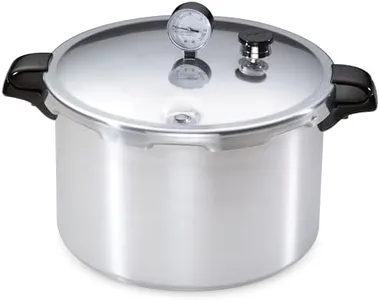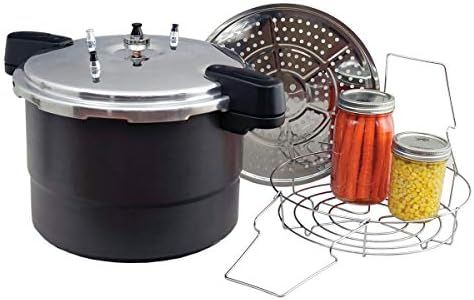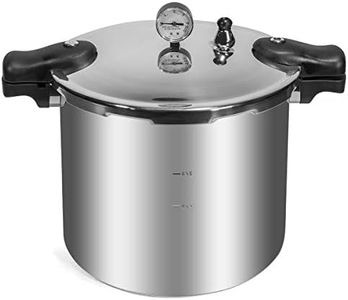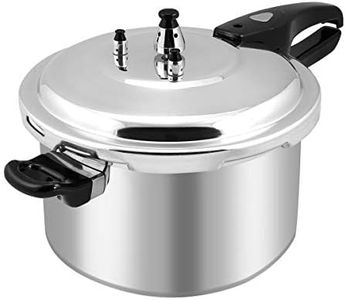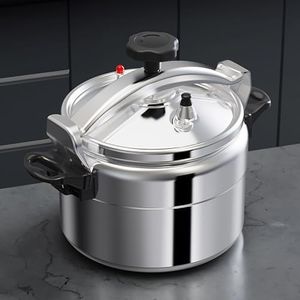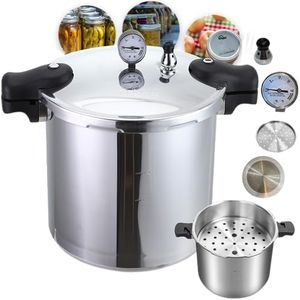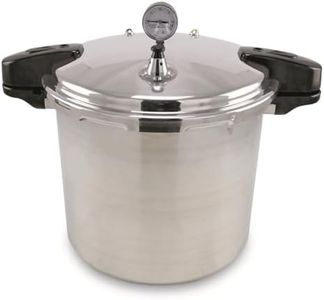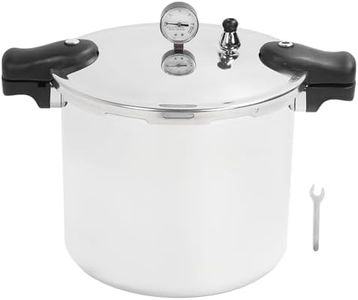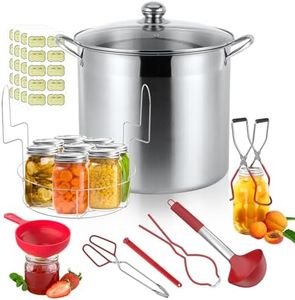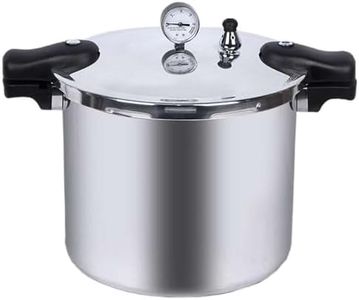We Use CookiesWe use cookies to enhance the security, performance,
functionality and for analytical and promotional activities. By continuing to browse this site you
are agreeing to our privacy policy
10 Best Pressure Canners
From leading brands and best sellers available on the web.Buying Guide for the Best Pressure Canners
When choosing a pressure canner, it's important to focus on safety, capacity, and ease of use. Pressure canning is essential for preserving low-acid foods like vegetables, meats, and soups, so you want a canner that maintains proper pressure and is reliable. Start by thinking about how much food you’d like to can at a time, how much storage space you have, and your experience level. Always prioritize features that will ensure safe canning practices.Capacity (Quarts)Capacity refers to the size of the canner, measured in quarts, and determines how many jars you can process in one batch. Smaller canners (typically 10-16 quarts) are easier to handle and store, but may only fit five to seven pint jars per load. Larger canners (20-23+ quarts) can handle more jars at once, making them ideal if you want to can in bulk or process large batches. However, they’re heavier and require more storage. Consider how much food you want to can in a single session and the available space you have in your kitchen.
Material (Aluminum vs. Stainless Steel)Pressure canners are usually made from either aluminum or stainless steel. Aluminum canners heat up quickly and are lightweight, but may discolor over time or react with acidic foods. Stainless steel is more durable, doesn’t react with foods, and is easier to clean, but it’s heavier and generally costs more. Choose aluminum if you need a light, budget-friendly option and don’t mind the potential for discoloration; go with stainless steel for longer-lasting performance and easier maintenance.
Pressure Gauge Type (Dial vs. Weighted Gauge)Pressure canners use either a dial gauge or a weighted gauge to measure and regulate pressure during canning. Dial gauges provide a precise reading and require annual calibration to ensure accuracy. Weighted gauges regulate pressure by rocking or jiggling, making them simple to use and less likely to need recalibration. Dial gauges are great if you want precise control, but you must remember to have them checked regularly. Weighted gauges are best if you prefer a more hands-off approach and low maintenance.
Safety FeaturesSafety features include locking lids, overpressure plugs, and pressure release valves. These prevent accidental opening when the canner is still pressurized and help regulate pressure to avoid dangerous build-up. Look for canners with clear, well-designed safety mechanisms, especially if you’re new to pressure canning or want extra peace of mind.
Stovetop CompatibilitySome pressure canners work on all types of stovetops, including induction, while others are only suitable for gas or electric coil burners. Flat-bottomed stainless steel canners are often needed for glass or induction cooktops. If you have a smooth or induction range, check that the canner is compatible before you buy; for gas or coil burners, most traditional canners will work.
Ease of Use and MaintenanceFeatures such as an easy-to-read pressure gauge, simple assembly, and dishwasher-safe parts can make pressure canning more convenient, especially for beginners. Consider how much effort you want to put into setup and cleaning. If you value convenience, look for canners with clear instructions and parts that are easy to disassemble for thorough cleaning.
